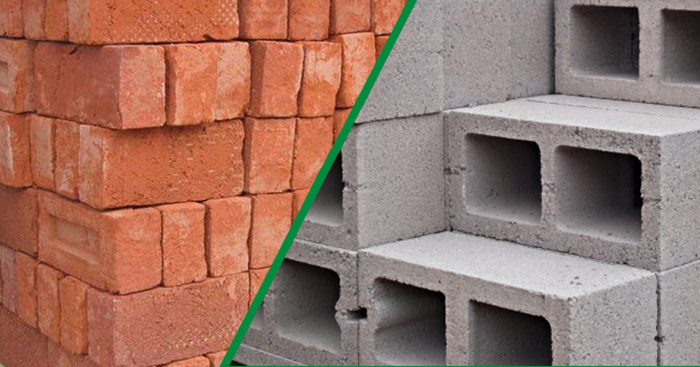Why Are People Using Cement Bricks Instead of Red Bricks in Construction? Which One Is Cheaper and Better?

Why Are People Using Cement Bricks Instead of Red Bricks in Construction? Which One Is Cheaper and Better?
When we think of building a house, one of the most basic and essential materials that come to mind is the humble brick. Traditionally, red clay bricks have been the go-to choice for generations. But have you noticed that more and more people today are choosing grey-colored cement or concrete bricks instead?
Is this just a trend, or is there a solid reason behind the shift? Let’s explore the key differences between red bricks and cement bricks, their benefits, and which one gives better value for money.
How Are Red and Cement Bricks Made?
Red bricks are made using natural clay, molded and baked in kilns at high temperatures. This method has been around for centuries and is still widely used, especially in rural or semi-urban areas.
Cement bricks (also known as concrete or fly ash bricks) are made by mixing cement, stone dust, gravel, and other materials. These are formed using machines under high pressure, resulting in bricks with uniform size and high strength.
Strength and Durability: Which One Lasts Longer?
Cement bricks are denser and have higher compressive strength, making them more durable and long-lasting. They absorb less water than red bricks, reducing the risk of dampness and seepage in walls.
Red bricks, while still strong, tend to absorb more moisture, which can lead to water retention and wall damage over time, especially in humid climates.
Uniformity and Ease of Construction
One of the biggest advantages of cement bricks is their consistent size and shape. This makes them easier to install, reduces gaps between bricks, and saves on mortar and plaster during construction.
Red bricks, being hand-made or semi-machine made, often vary in size and shape. This can slow down construction and require more finishing work.
Weight and Handling
Cement bricks are generally heavier than red bricks, which makes them more solid but also slightly more labor-intensive to handle. However, fly ash bricks—a type of cement brick—are often lighter and easier to work with, without compromising strength.
How They Withstand Weather Conditions
Cement bricks are better suited for rainy or damp regions because they don’t absorb much water. Their curing process ensures they remain strong and stable under varying weather conditions.
Red bricks, due to their porous nature, can weaken over time if exposed to heavy rainfall or moisture without proper plastering or waterproofing.
Cost Comparison: Which One Is Cheaper?
If we look at individual prices:
Red bricks typically cost between ₹7 to ₹12 per piece.
Cement bricks range from ₹20 to ₹25 per piece.
However, it’s important to look at the overall construction cost, not just per brick. Cement bricks, due to their uniformity and strength, often reduce labor time, mortar usage, and plaster thickness, which can balance out the higher initial price.
Which One Should You Choose?
If you’re building a budget home or a small structure, red bricks can still be a viable and economical option—especially if sourced locally and of good quality.
But if you’re aiming for modern, strong, and durable construction—especially in areas prone to moisture or where speed is essential—cement bricks (especially fly ash or concrete blocks) are worth the investment.
The shift from red bricks to cement bricks isn’t just about appearance—it’s about performance, durability, and long-term value. As construction practices evolve, so does the choice of materials. The right brick for your home depends on your budget, climate, and structural needs.












